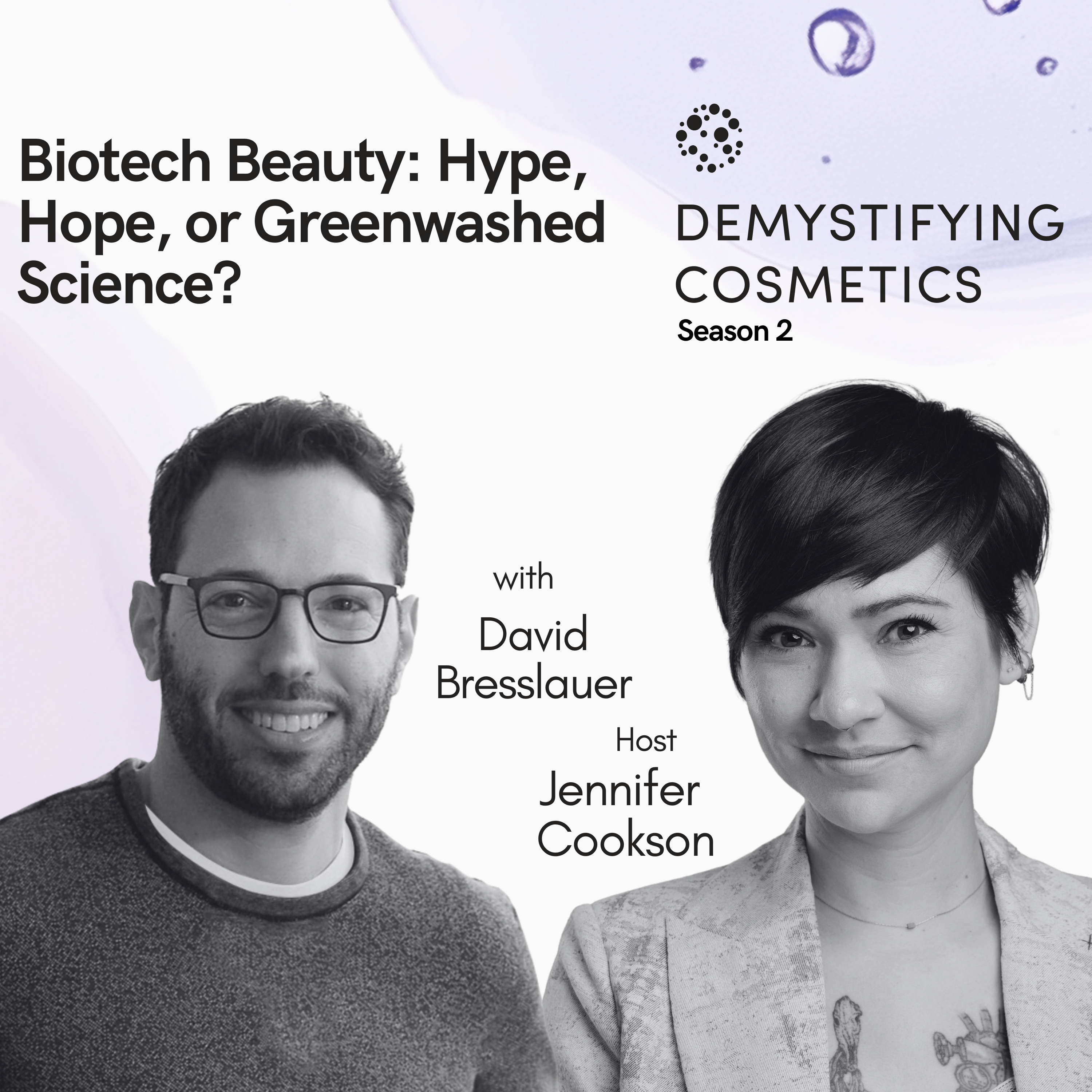Biotech Beauty: Hype, Hope, or Greenwashed Science?


The beauty industry is buzzing with terms like “lab-grown,” “bioengineered,” and “nature-identical”—but what do these really mean, and how much of it is science versus storytelling? In this episode of Demystifying Cosmetics, we’re joined by David Breslauer, a synthetic biologist and the co-founder and CTO of Bolt Threads, a pioneering biomaterials company known for innovations like lab-grown spider silk and mycelium-based leather.David brings deep expertise in synthetic biology and materials science—and a refreshingly grounded take on how biotechnology is being positioned in beauty and fashion. We explore what’s real, what’s overstated, and what it takes to move from breakthrough to brand adoption without falling into the greenwashing trap.From ingredient sourcing to consumer trust, this conversation peels back the layers of innovation to reveal what biotech can actually deliver—and what still needs to evolve.Takeaways:• Biotech Means Engineering Living Systems, Not Just Natural Extracts: True biotech involves engineering microbes, plant cells, or enzymes to manufacture molecules or materials unavailable or unaffordable from nature at industrial scale. Standard plant extracts, purified crop ingredients, or cold-pressed botanicals being rebranded as "biotech" dilute the term's meaning, even though they may be valuable ingredients in their own right.• The Path to Market Is Longer and More Expensive Than Most Realize: Taking a biotech ingredient from proof of concept to market-ready requires 5-10 years and $10-150 million before reaching breakeven volumes. This includes years of lab R&D, clinical trials for efficacy claims, pilot scale manufacturing, downstream purification, quality control, and three years alone just for global regulatory approval.• Scale-Up and Cost Effectiveness Are the Highest Risk Points: While scientific discovery is challenging, the compounded risk comes after finding a functional molecule. The highest failure rate occurs when trying to achieve cost-effective, routine manufacturing at scale. Many promising ingredients die because they're stuck in non-scalable discovery systems, can't secure investment for scale-up, or never achieve competitive pricing.• Independent Brands Are Essential First Movers: Big CPG brands require extremely compelling reasons (10,000x better performance) to switch global supply chains. Independent beauty brands willing to pay more and take risks serve as crucial first movers, helping biotech companies navigate regulatory filings, build supply chain diversity, and prove market viability before transitioning to larger customers.• GMO Attitudes Are Shifting, But Education Remains Critical: The majority of brands have moved past GMO concerns, especially with certifications like "from GMO, but not GMO" that clarify the ingredient itself contains no genetic modification. However, a few large CPG players are still figuring out their policies as they risk being left behind when the next billion-dollar brand is built on recombinant ingredients like growth factors.